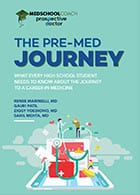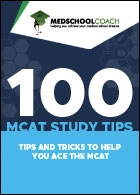
Table of Contents
Physician Assistants (PAs) and physicians (MD or DO) both follow career paths involving hands-on patient care that requires a solid understanding of medical science and how to work with patients. After completing a medical education, both work with their patients to make diagnoses, create treatment plans, and work with their patients to address medical conditions and overall health.
The biggest difference is that, while they are both healthcare providers, a PA is not a doctor. Though PAs share many of the same duties and responsibilities as doctors, they typically work under the supervision of a licensed physician. Physician assistants can’t perform surgery, can’t prescribe controlled substances in the state of KY, and can only order and interpret labs under supervision.
Fully-fledged physicians, on the other hand, are fully qualified to prescribe all medications, perform surgery, diagnose medical conditions, and create treatment plans without additional supervision.
In this article, we break down the differences between physicians and physician assistants to help you make the best choice for your own career.
Read Next: What’s the Difference Between an MD and a DO?
The Primary Differences
Physician assistants see patients and are qualified to diagnose and treat most forms of illness and disease, but they work under a supervising physician. Other major differences include education, scope of practice, specialty area(s), salary, and work/life balance.
A common misconception about PAs is that they have to work with a practicing physician right alongside them. Truthfully, most PAs provide patient care independently, and their supervising physician simply reviews their cases and treatments.
| Doctor (MD or DO) | Physician Assistant (PA) | |
|---|---|---|
| Education | 3-4 years of medical school, followed by 3+ years of residency | Bachelor’s degree (about four years of education), 2-3 years in a Master’s physician assistant program |
| Clinical Rotations | Included during years 3 and 4 of medical school, usually in internal medicine, general surgery, psychiatry, obstetrics and gynecology, pediatrics, family medicine, and neurology (followed by elective rotations) | 2,000 hours in addition to a degree program, typically in emergency, family, internal medicine, general surgery, obstetrics and gynecology, pediatrics, and psychiatry |
| Practice Scope | Can perform all tasks done by a PA without supervision, prescribe controlled substances in all 50 states plus D.C. and P.R., perform surgery, supervise PAs, and may be needed for complex or rare disease diagnosis and treatment. | Can perform physical exams, make diagnoses, determine treatment plans, prescribe drugs (cannot prescribe controlled substances in Kentucky), and order and interpret labs under the supervision of a doctor (MD or DO). Cannot perform surgery. |
| Specialties | Must choose a specialty to study during residency (3-4 years or more), and this rarely changes during their career. | May alter specialty at any time. Most work in primary care medical practice. Common specializations include psychiatry, urgent care/emergency medicine, pediatrics, and internal medicine. Many PAs work in underserved communities. |
| Certifications | MD: United States Medical Licensing Examination (USMLE) DO: Comprehensive Osteopathic Medical Licensing Examination (COMLEX). To recertify, doctors must complete a certain number of CME (continuing medical education) hours and renew their state license periodically. | Physician Assistant National Certifying Exam (PANCE). To recertify, PAs must take either the Physician Assistant National Recertifying Exam (PANRE) or complete the PANRE-LA (longitudinal assessment) every 10 years. They must also complete 100 CME hours every 2 years to maintain licensure. |
| Salary | MD: $363,000 per year DO: $312,310 per year | $135,260 per year |
| Work/Life Balance | Work over 40 hours per week on average; often work long shifts and are required to be at work or on call nights, weekends, and holidays. | Work a standard 40-hour work week; often work only 9-5 shifts. |
*Salary details from MedScape and Hospital Careers. Specialists often make 2-4x the salary of general practitioners, so the actual range in salary is very wide compared to this average.
**Salary details from U.S. Bureau of Labor Statistics.
Let’s take a look at a few of these in more detail.
Education
PA and MD career paths share the prerequisite of an undergraduate degree, but then the paths split before they begin the full-time healthcare experience.
After getting a Bachelor’s degree, a PA will go to a PA school (physician assistant program or physician associate program) for a Master’s degree for 2-3 years. An aspiring physician must complete 4 years of medical school, followed by 3-4 years or more in a residency program to sharpen the skills necessary for their specialty.
Read Next: The Easiest 30 U.S. Med Schools to Get Into in 2025
Physician assistants complete a minimum of 2,000 hours of clinical rotations before their certification, and these hours are outside of their Master’s program. The clinical experience for MDs and DOs takes place during their third and fourth years of a medical program and during residency.
Quick Score Stats:
- According to the 2021 Physician Assistant Education Association Report, the average GPA for PA students was 3.6, and the average GRE was 305-310.
According to the AAMC for 2023-2024, the average GPA for medical school matriculants was 3.77, and the average MCAT score was 511.7.
We’re here to coach you through the entire process of becoming a doctor. Schedule a consultation with us and see how we can help you get into the medical school of your choice.
Clinical Rotations
Physicians do standard clinical rotations during their third year in medical school, branch out into elective rotations in their fourth year, and work directly with patients in their chosen specialty during residency under the supervision of an attending physician.
Since the length of residency differs by specialty, so does the number of patient care hours required before you can enter practice as a fully autonomous physician. I spent five years in residency and then completed a one-year fellowship to become an attending interventional radiologist. Depending on the specialty, some doctors may only spend three years in residency, while others (for instance, neurosurgeons) may need to spend seven or more years.
To begin practice as a PA, the clinical rotation/experience requirements are generally less stringent. PAs are required to complete at least 2,000 hours of clinical rotations during their Master’s education.
However, unlike medical school, PA programs have minimum clinical experience requirements that applicants must meet to be considered for admission. Typically, these requirements range from 1,000 to 1,500 of direct patient care experienceIn most cases, the clinical hours required for PA school are all required to be from paid positions. This is a non-exhaustive list of some of the jobs many PAs work in patient care before obtaining their Master’s degree:
- Certified Nursing Assistant (CNA)
- EKG Technician
- Emergency Medical Technician/Paramedic (EMT)
- Emergency Room Technician
- Medical Assistant
- Nurse
- Registered Nurse (RN)
- Patient Care Technician
- Physical Therapy Aide or Technician
- Phlebotomist
- Psych Technician
- Surgical Technician
Scopes of Practice
Under the supervision of a doctor, PAs can:
- Perform physical exams
- Make diagnoses
- Determine treatment plans
- Prescribe drugs (cannot prescribe Schedule II controlled substances in Kentucky)
- Order and interpret labs
Doctors may do all of these tasks unsupervised and may also:
- Perform surgery
- Prescribe pharmaceuticals, including controlled substances, in all U.S. states and territories
- Conduct diagnosis and treatment for more complex or rare conditions not covered by the scope of a PA’s education
- Supervise PAs
The scope of practice for a PA will vary by state law and policies. Most states allow for the scope of practice to be decided by the practice of the PA.
Some states do not allow PAs to prescribe medications and require the supervising doctor to review and co-sign charts, while other states grant board-certified PAs more autonomy and a broader scope of practice. Some PAs have to request clinical privileges from institutions, which must then be approved by the medical staff of the facility.
Read Next: A Complete Guide to the Residency Match Process
Salaries
According to the U.S. Bureau of Labor Statistics, the latest median salary for physician assistants was $133,260 per year, while the latest median salary for physicians was greater than $363,000. It should be noted that PAs perform many of the same daily tasks despite making less than half of what physicians make.
In general, DOs have lower average annual salaries than MDs, possibly due to the fact that a majority of DOs work in family practice versus a more specialized position. The average salary for a specialist physician, such as a plastic surgeon, can be considerably higher.
Work/Life Balance
The work hours of PAs are generally lighter than those of MDs, making it easier to maintain a healthy work/life balance. PAs usually work standard 40-hour work weeks, made up mostly of 9-5 shifts.
In contrast, work weeks for MDs often exceed 40, and their shifts are longer than typical 9-5s. Additionally, they are required to work or remain on call at night, on weekends, and over holidays.
Residency in particular is tough, with 60-, 80-, and even 100-hour work weeks being not uncommon. After graduating from residency, though, physicians can generally expect to work fewer hours.
It’s also worth mentioning that some physician specialties boast a better work/life balance than others. Choosing a specialty is a very personal and complex decision, and this is only one factor.
Benefits & Drawbacks of Being a PA
Benefits:
- It is a more flexible medical profession than the role of a physician. You may change between various medical specialties throughout your career and are more easily able to relocate.
- The education required for a physician assistant is shorter and more affordable than traditional medical education. Also, PAs can get medical experience while working in the medical field, meaning they can make money while earning their licensure.
- PAs frequently work in primary care, allowing for long-term relationships with patients. If you’re interested in rich, ongoing patient relationships in a primary practice healthcare setting, a career as a physician assistant might work great for you!
Drawbacks:
- Physicians go through more rigorous schooling and training than PAs, which is a major advantage once the physician begins practicing full-time. Physicians can rise to the head of a healthcare team and have the final say in a patient’s treatment.
- Doctors typically have the most prestige on a medical team. An MD is the medical professional to whom other healthcare members, such as EMTs, nurse practitioners, and paramedics, look for guidance and answers.
- There are fewer high-dollar specialties for a PA to enter, whereas physicians have the option of practicing in specialties where they may make 2-4 times more than the average doctor.
Is it better to be a PA or MD? At the end of the day, your personal preferences and goals will determine if it is better for you to be a PA or MD. If you desire more autonomy, more extensive financial prospects, and don’t mind spending more money and time on schooling up front, becoming a medical doctor might work best. But for many, the benefits of being a PA outweigh those of becoming a physician.
The Path I Chose: MD Instead of PA
From Yaseen Elhag, a DO candidate and former member of the MedSchoolCoach team:
As an undergrad, this is a decision I made for myself not that long ago.
Ultimately, choosing between the physician vs. physician assistant route was a decision that required lots of self-reflection. I knew that:
Both careers would offer me immense medical knowledge. Going the PA route would mean I’d be working sooner. However, I’d lose the autonomy I’d have if I went the physician route.
My decision ultimately came down to my passion to pursue global health one day, working with various international humanitarian organizations and helping communities in need. The opportunities for me in those arenas are far greater as a physician compared to a physician assistant.
But for many people, there are just as many pros in the “PA” column. It’s a personal decision that comes down to your own unique situation and preferences as a medical student.
Read Next: What Are MD-PhD Programs? Overview & Program List
FAQs
Neither nurse practitioners nor physician assistants are required to complete a residency to be licensed. However, PAs are required to complete internships, and nurse practitioners are frequently required to do so as well.
A physician assistant is a licensed clinician who practices medicine under the supervision of a fully licensed physician. Although they perform many of the same tasks, a physician assistant (or physician associate) is not a doctor. They are healthcare professionals licensed to practice medicine, and their primary limitations are that they cannot perform surgery and must work under supervision, not autonomously like a physician.
Just like physicians, PAs can specialize in specific fields and must pass board-certification exams. Unlike physicians, however, there is more flexibility in moving between specialties without additional training.
Choosing the Right Medical Career for You
If you crave routine, long-term patient relationships, and the ability to improve the health and wellness of your community, a career as a PA might be right for you. Physician assistants more often work in underserved areas, which might be another attractive factor in your decision.
On the other hand, if you thrive on being a leader in your career and are comfortable with the intense responsibilities that come with it, becoming a doctor might be your best option.
Pre-med students should shadow both physician assistants and physicians and ask questions to fully understand the ins and outs of both professions’ careers. In doing so, you can make an informed decision about which profession to pursue.
Dreaming of becoming a physician? Talk to our Enrollment Team to learn why 92% of MedSchoolCoach clients get into medical school.

Sahil Mehta MD
Dr. Mehta is the founder of MedSchoolCoach and has guided thousands of successful medical school applicants. He is also a practicing physician in Boston where he specializes in vascular and interventional radiology.





